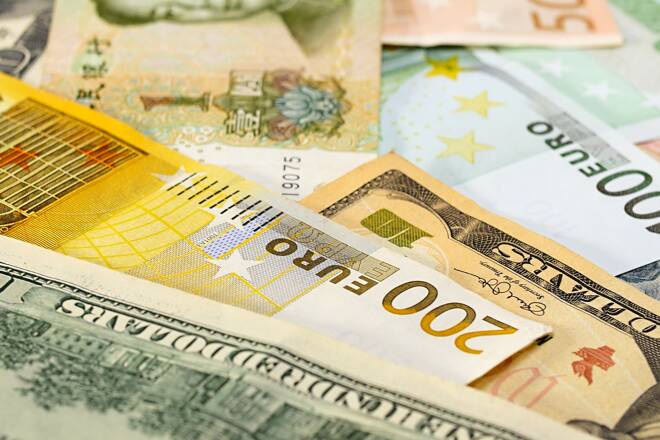Advertisement
Advertisement
EUR/USD Bears to Target $1.0550 on Softer Wholesale Inflation Numbers
By:
Following the German Ifo Business Climate Index numbers on Monday, wholesale inflation figures could weigh on the EUR/USD later this morning.
It is a quiet day for the EUR/USD on the economic calendar. The German economy will be in the spotlight again, with wholesale inflation numbers for November in focus. Following the prelim December private sector PMI numbers, the markets will look for softer wholesale inflationary pressures.
According to the December Composite PMI survey, input cost inflation fell for the third consecutive month to its lowest level since March 2021. Softer input prices led to slower increases in output prices that declined for the third successive month to the lowest level since August 2021.
Economists forecast Germany’s annual wholesale inflation rate to soften from 34.5% to 30.6%. Softer-than-expected numbers should peg the EUR/USD back.
After the ECB upwardly revised inflation from 5.5% to 6.3%, the German wholesale inflation numbers could question forecasts and the hawkish bets on ECB. ECB member Luis de Guindos speaks today. On Monday, De Guindos talked about the need to continue raising interest rates.
EUR/USD Price Action
At the time of writing, the EUR was flat at $1.06073. A mixed start to the day saw the EUR/USD rise to an early high of $1.06091 before easing back.
Technical Indicators
The EUR/USD needs to move through the $1.0614 pivot to target the First Major Resistance Level (R1) at $1.0652 and the Monday high of $1.06581. Hotter-than-expected German inflation numbers would support a bullish session.
In the case of an extended rally, the bulls will likely test the Second Major Resistance Level (R2) at $1.0696. The Third Major Resistance Level (R3) sits at $1.0778.
Failure to move through the pivot would leave the First Major Support Level (S1) at $1.0570 in play. However, barring a risk-off-fueled sell-off, the EUR/USD pair should avoid sub-$1.05. The Second Major Support Level (S2) at $1.0532 should limit the downside.
The third Major Support Level (S3) sits at $1.0449.
Looking at the EMAs and the 4-hourly chart, the EMAs send a bullish signal. The EUR/USD sits above the 50-day EMA ($1.05856). The 50-day EMA pulled away from the 100-day EMA, with the 100-day EMA widening from the 200-day EMA, delivering bullish signals.
A hold above the 50-day EMA ($1.05856) would support a breakout from R1 ($1.0652) to target R2 ($1.0696). However, a fall through the 50-day EMA ($1.05856) and S1 ($1.0570) would bring S2 ($1.0532) into view. The 200-day EMA sits at $1.03828.
The US Session
House sector data for November will be in focus in the US session.
Mortgage rates and recession fears have adversely affected the housing sector this year. Another set of weak numbers could add further pressure on riskier assets.
Another fall in building permits and housing starts would further fuel fears of a recession as the Fed hawks dampen hopes of a Fed pivot. Following hawkish FOMC member chatter in the wake of the Fed policy decision, FOMC member commentary will need monitoring.
About the Author
Bob Masonauthor
With over 28 years of experience in the financial industry, Bob has worked with various global rating agencies and multinational banks. Currently he is covering currencies, commodities, alternative asset classes and global equities, focusing mostly on European and Asian markets.
Advertisement
